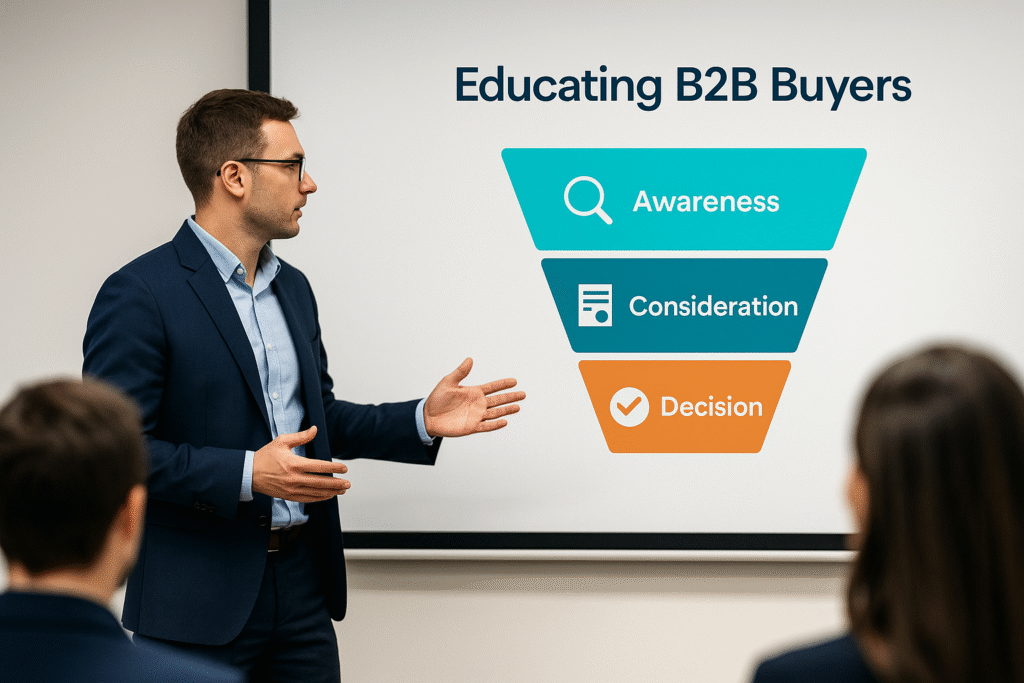About the Company
The client is a multinational professional services firm headquartered in Mumbai, India, with operations spanning 40+ countries and specialized practices in financial consulting, risk management, and digital transformation advisory. As one of the fastest-growing consulting brands in the Asia-Pacific region, the company was expanding aggressively into North American and European markets. Despite strong client retention, its digital presence lacked the depth and engagement expected by C-suite audiences. Executives consumed content but didn’t stay engaged long enough to perceive strategic value. To reinforce credibility and drive higher conversion from engagement, the firm needed content experiences that held attention and built executive trust.
Their strategic goal was to deepen engagement with C-suite prospects and demonstrate value through content that positioned them as trusted advisors, not service vendors.
The Challenges
Despite significant investment in digital content, the client’s material was failing to hold executive attention. Analytics showed traffic peaks but shallow engagement. Digiwigy identified three distinct challenges:
Low Time-on-Page Metrics
Executives rarely spent more than 45 seconds on high-value pages. Content was generic, heavily jargonized, and lacked strategic storytelling. Without a clear reason to invest time, most sessions ended in early exits, creating a surface-level engagement pattern across the funnel.
Weak Multi-Session Engagement
The client’s prospects rarely returned for second visits. There were no connected content journeys that rewarded deeper exploration. Buyers consumed one piece and dropped, leaving sales teams with cold leads. Repeat visitor rates trailed benchmarks by 36%, impacting nurture sequences and brand recall.
Static Content Formats
The client relied heavily on PDF reports and long blogs with no interactive or immersive experiences. Modern B2B buyers, especially senior leaders, expected multimedia, concise insights, and data visualization. Without dynamic engagement formats, the firm’s content struggled to differentiate itself from competitors.
Poor engagement metrics were translating into longer deal cycles and weakened perception of authority among senior decision-makers.
How did Digiwigy help?
Digiwigy designed a comprehensive buyer engagement framework that redefined how audiences consumed and interacted with content. By combining persona insights, storytelling, and experience design, we created a content ecosystem that not only captured visitor attention but also sustained relevance and repeat engagement across executive decision-making journeys.
Redesigned Persona-Aligned Content Journeys
We developed a persona-based narrative framework tailored to executives, influencers, and evaluators. Content was redesigned to front-load value, integrating business insights, ROI models, and executive takeaways within the first scroll. Long-form assets were broken into scannable modules, with embedded infographics, video explainers, and CTA breakpoints. User flow testing revealed optimal engagement triggers, which we baked into the new journey maps. To reinforce stickiness, we implemented sequential storytelling: each asset connected to the next, guiding readers deeper into a curated journey. This orchestration increased average session depth by linking related assets, reducing bounce rates, and driving repeat visits.
Introduced Interactive & High-Value Formats
Static content was replaced with immersive formats such as interactive calculators, clickable infographics, and short-form video recaps designed for decision-makers with limited time. We built a modular asset hub where executives could explore insights at their own pace, compare benchmarks, and visualize ROI scenarios. To measure and optimize, we layered advanced engagement analytics: scroll-depth tracking, heat mapping, and multi-session pathing. Sales enablement teams were trained to leverage engagement data as a buying signal, tailoring follow-ups to what executives actually consumed. This ensured content not only retained attention but actively fed intelligence back into marketing and sales cycles.
The Results
increase in average buyer engagement time
longer dwell time on key assets
increase in repeat session rates
Bounce rate reduced by 37% across content hubs.
Interactive formats drove 4.5x more clicks than static PDFs.
Average session depth increased from 1.4 to 3.6 pages.
18% higher form-fill conversions from long-form content.
56% increase in C-Suite engagement with video explainers.
29% uplift in nurture email CTRs.
Engagement data integrated into CRM, improving sales follow-up personalization.
The Key Takeaways
For enterprise B2B brands, engagement is no longer about traffic volume but about time, relevance, and depth of interaction. Executives judge credibility based on the value density of content and whether it justifies their attention. Structuring journeys that hold attention is now a pipeline-critical strategy, not a vanity metric.
Engagement quality outweighs traffic volume.
High-traffic sites with shallow engagement rarely produce qualified opportunities. C-suite decision makers need content that makes their time worthwhile. Persona-specific storytelling, modular layouts, and ROI framing drive dwell time. Measure session depth, repeat visits, and engagement patterns, not just clicks, to evaluate true marketing effectiveness.
Interactive formats accelerate trust and recall.
Senior executives expect visual clarity and decision-ready insights. Interactive assets like calculators, clickable benchmarks, and concise video narratives deliver quick yet memorable experiences. These formats strengthen recall, differentiate brand positioning, and accelerate conversations by reducing the cognitive load required to extract value from content.
Engagement data is a revenue signal.
Engagement metrics should not sit in isolation. Scroll-depth, dwell time, and return visits are strong buying signals. When integrated into CRM and mapped to opportunities, they empower sales to prioritize high-intent accounts and personalize outreach. Engagement data closes the gap between marketing activity and revenue attribution.




